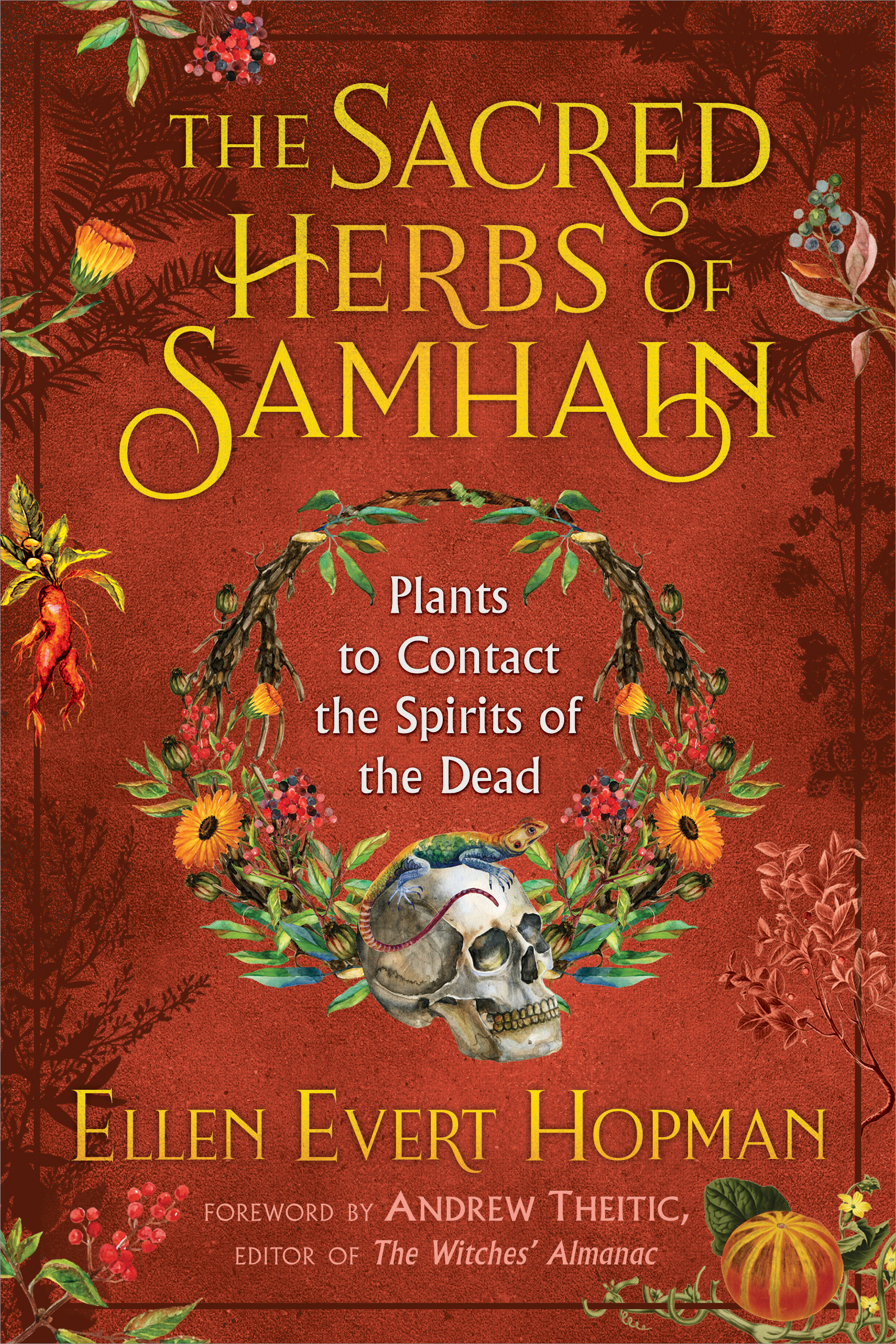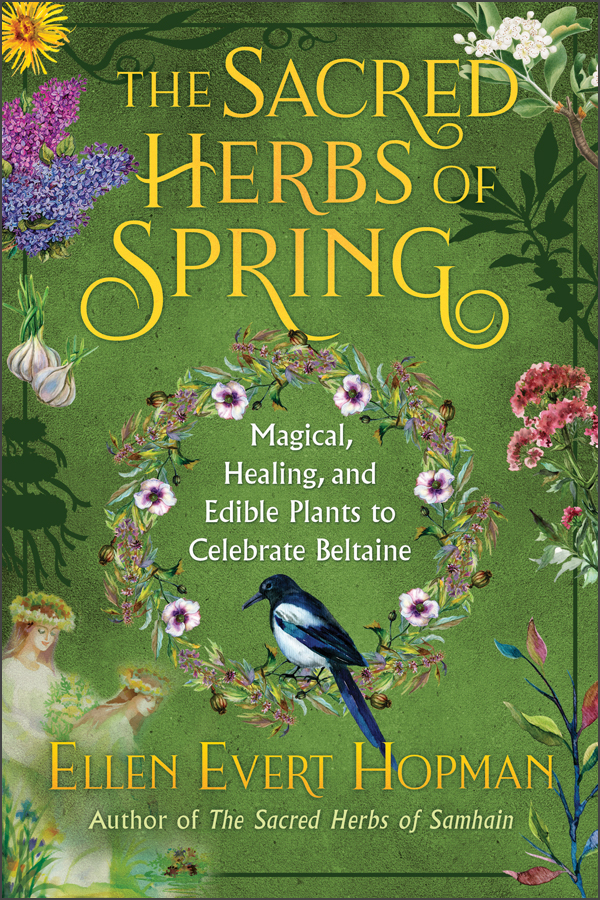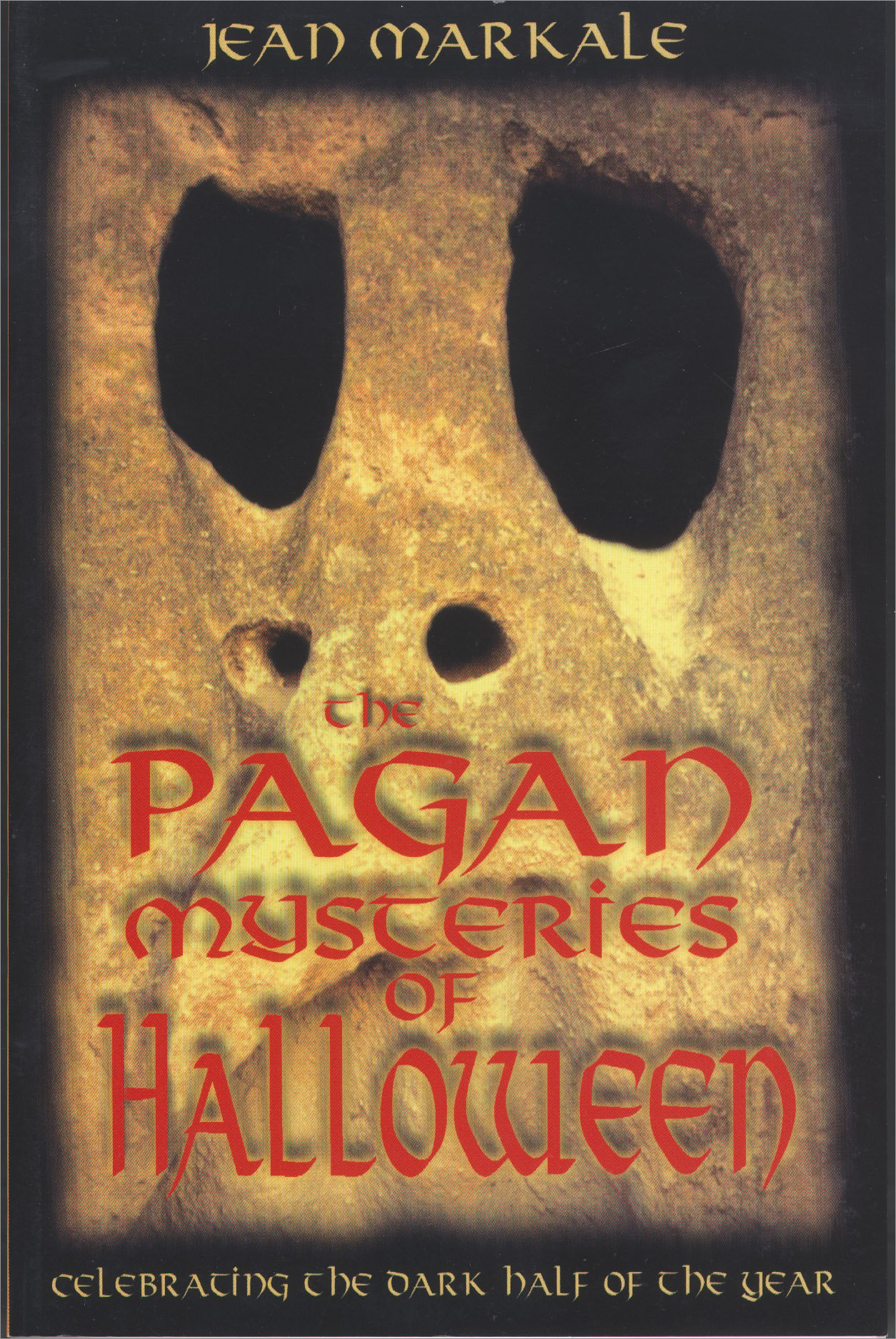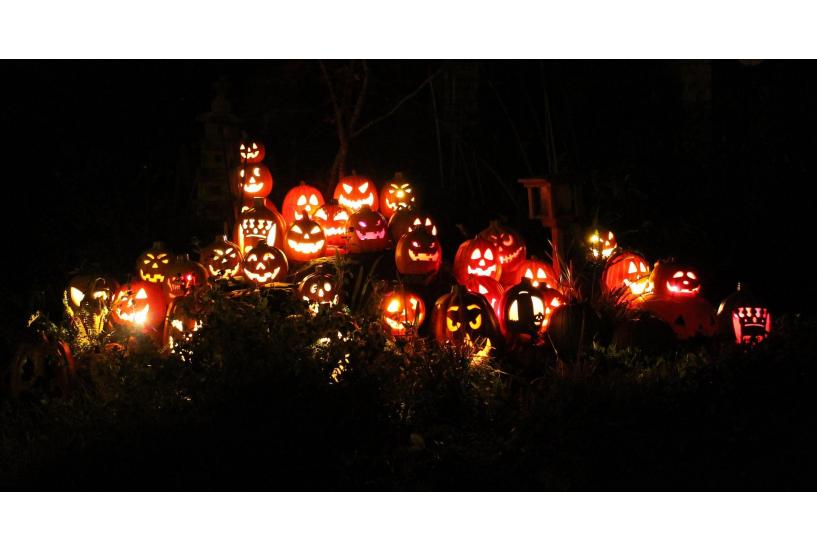by Ellen Evert Hopman, author of The Sacred Herbs of Samhain, The Sacred Herbs of Spring, and several other books
Samhain (pronounced “sow-win”) is a great fire festival of the ancient Celts, celebrated at the official close of the harvest. Traditionally, it is celebrated from October 31 to November 1, as the Celtic day began and ended at sunset. By Samhain all the produce of the fields must be safely gathered into the house and barn, and anything left in the fields after this date is the property of the sidhe (pronounced “she” and meaning the fairies, sometimes known as the Good Neighbors), and not to be touched by mortals. It is an old Celtic tradition to leave offerings for the fairies on this potent spirit night.
Samhain marks the end of the Celtic year and, after a three-day observance, the beginning of the next agricultural cycle. Just as a seed begins its existence in the dark of the soil, so does the new year begin in the dark of winter, which is the time to rest, take stock of the past year’s accomplishments, and dream of future goals.
For the ancient Celts there were only two seasons, summer and winter, the light half of the year and the dark half of the year. The festivals of Samhain and Beltaine (May Day) were portals between these two spheres of existence, times of chaos when the Otherworld more easily bled through. Samhain, like Beltaine, was a potent spirit night, a liminal time when the walls between the worlds were thin and ancestral spirits roamed the Earth. It was a good time for divination and contact with the Otherworld.
According to Celtic tradition, the dead come to visit the living at Samhain, especially in the dark of night. A welcome is extended to these wandering dead by leaving a door open, setting an extra plate of food at the table, and placing an extra seat near the hearth. Candles are lit and placed in windows and doorways to light the way home for departed ancestors.
But it is understood that not all of these ancestors are happy and that some might come to take revenge for slights inflicted upon them in their previous life. Samhain is the time when vengeful ghosts find it easiest to cross the veil and exact retribution. Ghosts are known to seek out and follow those with whom they have a grudge, and if you hear footsteps behind you, it can be deadly to turn around and look to see who is there. If you have to be outside, it is wise to go in disguise so as not to be recognized by vengeful spirits.
Herbs, trees, and other plants can be powerful allies in any engagements with the spirit world, especially during Samhain, when the doors to the spirit world are open. Among other things, the herbs profiled in my book The Sacred Herbs of Samhain can help you voyage to the Otherworld, communicate with spirits, or protect yourself against malevolent energies. Here are a few plants with special meaning for Samhain, including protection from vengeful spirits and entities.
Oak Tree (Quercus spp.)
Oak is a being that is perfectly balanced between the worlds. Its roots extend as far as its branches are high. Like Rowan twigs, Oak twigs can be bound with red thread into an equal-armed solar cross and carried or worn to bring protection and balance. Acorns can be carried or worn to promote creativity and conception. Druids were known to carry Acorns (and Hazelnuts) on their person for inspiration and protection.
Oak is a tree of the sun and sacred to the high gods Athena, Hermes, Jupiter, Odin, Perkūnas, Perun, Rhea, Thor, Zeus, Brighid, and the Daghda. Dried and powdered Oak bark can be burned to bring divine assistance from these gods, and Oak logs are appropriate for a ritual fire.
A guardian spirit lives inside each Oak tree. Many have seen it as an old man with a long beard, while others perceive it as a “dryad” or female entity. Each Oak is a doorway to the Otherworld. Druids enter the Oak shamanically by visualizing an opening at the base. From there Druids can travel down via the roots to the Underworld of the sidhe (fairies) and the ancestors, or up via the branches to the Sky World of the gods.
Oak at Samhain
Make tiny solar crosses of Oak twigs bound with red thread and place them in windows or wear them. Gather Acorns and put them in every coat pocket. Place Acorns on the altar. Make an Acorn cake for your Dumb Supper. Meditate under an Oak tree and enter it, rising upward through the trunk to the branches to visit the Sky World of the gods, or go down through the roots to the sidhe realm. Burn Oak in the ritual fire and on the altar to contact the high gods of the Indo-European pantheons.
Pumpkin (Cucurbita pepo),
Rutabaga (Brassica napus napobrassica),
Turnip (Brassica rapa rapifera)
The ancient Celts did not have Pumpkins, which are a Native American vegetable; they carved Rutabagas and Turnips on Samhain, placing a candle inside to illuminate them. For the Celts, the soul of a person was in the head and no enemy could be vanquished fully unless you took their head. Jack-o-lanterns were lit to frighten away enemies, to honor the spirits of deceased ancestors, and to repel evil and harm from the home.
Pumpkins, Rutabagas, and Turnips at Samhain
Hollow them out, carve faces into them, put an inch or so of sand in the bottom, and place a candle inside. Arrange them decoratively around the outside of the house. On Samhain Eve, light the candles and place the jack-o-lanterns in the windows and by the door to welcome your wandering dead.
Apple Tree (Malus spp.)
The Apple is a symbol of the Otherworld; cut an Apple in half and you will find a pentagram revealed. Samhain and Halloween celebrations traditionally incorporate Apples, serving hot spiced Apple cider or wine with sliced Apples and bits of toast floating on top.
Apple has a prominent place in Celtic lore. The Celtic god who guides the dead to the Otherworld is Manannán Mac Lir, who lives on an island called Eamhain Abhlach (Place of Apples). Manannán once appeared at Tara, the ancient seat of the high kings of Ireland, in the guise of a mysterious warrior, carrying a branch of golden Apples that, when shaken, produced music that made everyone who heard it forget all their troubles. And when King Arthur died, he was ferried across the water to Ynys Afallon or Ynys Afallach—that is, Avalon, the Isle of Apples.
Druids to this day use a ritual tool called a “bell branch” or “Apple branch” which is a stick of Apple wood with nine bells on it. The bell branch is shaken before a ritual to drive away negative energies and attract helpful fairies (who love the sound of tinkling bells).
Apple Tree at Samhain
The custom of bobbing for Apples at Samhain has Otherworldly connotations; for the ancient Celts, water was the gateway to the fairy realm and the home of the ancestors. Bob for Apples at your Samhain feast after silvering the water with a silver coin (or a piece of silver jewelry) as an offering.
Make yourself a bell branch (see above). Shake it before any Samhain ceremony to ward off negative spirits and attract the fey.
Just before midnight on Samhain, cut an Apple into nine sections and carry the pieces to a dark room with a mirror. At the stroke of midnight begin eating the Apple pieces while staring into the mirror. When you get to the ninth section, throw it behind you and the face of your future lover should appear.
Alternatively, at midnight on Samhain, throw freshly peeled Apple parings over your shoulder and see what letter they form to divine the initials of your next lover. Hold an Apple in your hand until it is warm and then hand it to your intended; if they bite into it, they are yours.
If you have more than one potential future lover, press apple seeds to your cheek and name each seed for a potential mate. The last seed to stick to you will be your true love.
Periwinkle (Vinca minor, V. major)
Periwinkle, a common woodland groundcover, is also known as Sorcerer’s Violet, Flower of Immortality, and Flower of Death, which gives us a hint about its magical reputation. It is said to be a charm against evil spirits, and wearing the herb or hanging it over the door and on gateposts will repel both evil spirits and ill-intentioned sorcery.
Periwinkle likes to grow on disturbed ground, which may be why it favors graves. When found growing on a grave, especially that of a child, it enables the parents to maintain their connection with the child’s eternal spirit.
Periwinkle at Samhain
Make a wreath of Periwinkle and hang it on your door. Drape it over gates and windowsills as protection against ill-intentioned spirits. Place a vase of Periwinkles on the altar, in memory of a deceased child.
Star Anise, Chinese Star Anise (Illicium verum)
The powdered bark of Star Anise is used in incense mixtures, which can be used in ceremonies to honor the dead.
On Mexico’s Día de los Muertos (Day of the Dead), an ancient festival that long predates European colonization, Pan de Muerto (Bread of the Dead) bread is baked and shaped into skulls or round loaves with dough strips on top that resemble bones. Pan de Muerto is served in local cafes and included in ofrendas, which are collections of the favorite foods of deceased ancestors placed on an altar or grave to honor them.
The bread traditionally contains Anise seeds (Pimpinella anisum), and it can also be made with Star Anise which has a similar flavor.
Pan de Muerto Bread Recipe
¼ cup organic butter
¼ cup organic milk
¼ cup warm water
3 cups organic all-purpose flour
1¼ teaspoons active dry yeast
½ teaspoon sea salt
1 tsp. ground star anise seed or 2 teaspoons anise seed or ½ teaspoon anise extract (they are different plants and star anise has a stronger flavor than anise seed)
¼ cup organic white sugar (or ¹/₈ cup raw, local honey)
2 free-range, organic eggs, beaten
2 teaspoons organic orange zest
Heat the milk and the butter together in a saucepan, until the butter melts. Remove from the heat and add the warm water. The mixture should be around 110 degrees Fahrenheit.
In a large bowl combine 1 cup of the flour, yeast, sea salt, star anise seed, and sugar. Beat this into the warm milk mixture. Add the eggs and orange zest and beat until well mixed. Stir in ½ cup of flour and continue adding more flour until the dough is soft.
Turn the dough out onto a lightly floured surface and knead until smooth and elastic. Place the dough into a lightly greased bowl cover with plastic wrap and let rise in a warm place until doubled in size. (This will take about 1 to 2 hours).
Punch the dough down and shape it into a skull shaped loaf. Place the dough onto a baking sheet, loosely cover with plastic wrap and let rise in a warm place for about 1 hour (or until just about doubled in size).
Bake in a preheated 350 degrees F (175 degrees C) oven for about 35 to 45 minutes. Remove from oven let cool slightly then brush with glaze.
Glaze for the Bread
¼ cup organic white sugar
¼ cup organic orange juice
1 tablespoon orange zest
2 tablespoons organic white sugar
In a small saucepan combine sugar, orange juice, and orange zest. Bring to a boil over medium heat and boil for 2 minutes.
Brush over the top of the bread while it’s still warm. Sprinkle the glazed bread with white sugar.
Star Anise at Samhain
Place Star Anise on the altar to honor the dead, or leave some on a grave. Bake a Pan de Muertos and eat it in the cemetery, near the resting place of your ancestor. Leave one on the grave as an offering.
 |
 |
 |
 |
 |



